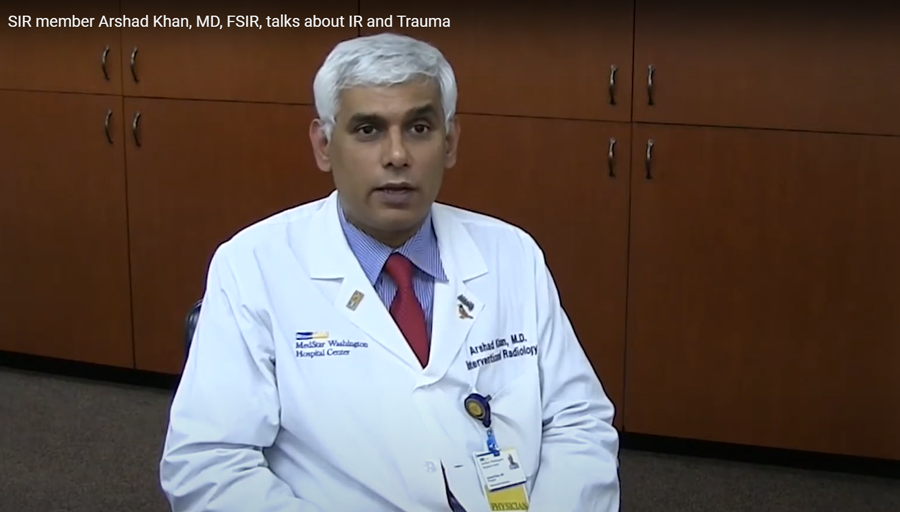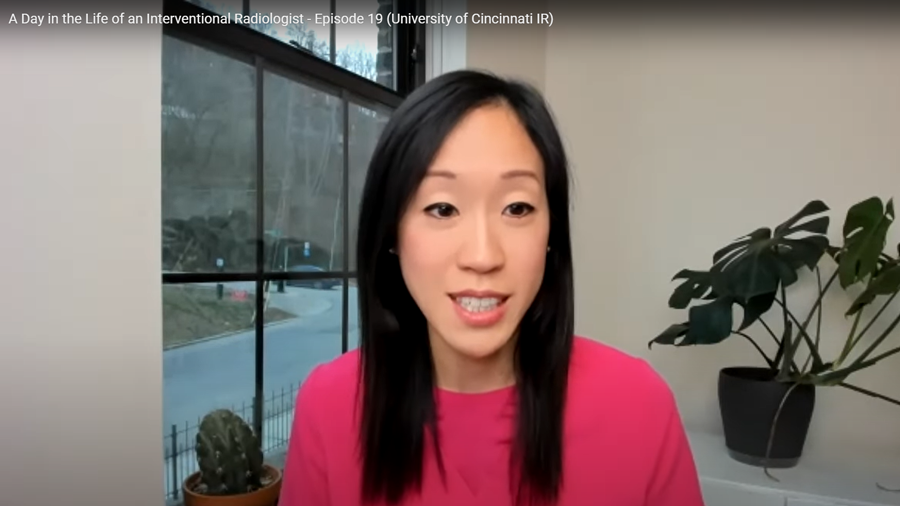In Training
Unveiling compassion through innovation
Interventional radiology (IR) is a growing career pathway for medical students and residents who want to change the lives of the patients they serve.

Interventional radiology pairs advanced imaging with minimally invasive procedures, allowing practitioners to offer better patient outcomes from vascular interventions to oncology treatments and beyond.
SIR member Oleksandra Kutsenko, MD, gives a TEDx Talk about the promise of IR.

As an interventional radiologist, you’ll be rewarded by seeing improved patient outcomes while partaking in an evolving field alongside medical visionaries. The Society of Interventional Radiology (SIR) is ready to guide and educate you throughout your career.
SIR member Arshad Khan, MD FSIR, explains IR’s critical role in trauma care.

We’ll help you stay up to date on residency requirements and provide peer networks to connect you with residents, fellows and students. Our members also have access to exclusive volunteer opportunities, grants and scholarships as well as SIR Connect: our private online platform just for IRs at every career stage.
SIR member Stephanie Kim, MD, describes a day in the life of an interventional radiologist.

Join the interventional radiologists who are transforming the field through life-changing procedures. Explore the exciting field of IR with SIR at your side! Membership for students is always free. Residents pay just $50 annually.
Which IR residency route is right for you?
If you choose to become an IR, you’ll be in good company. There are 2,000+ SIR trainee members across the world who are considering or participating in these pathways:
Integrated IR residency: Medical students apply and match directly into an integrated IR residency. This is ideal if you’re confident in your desire to become an IR.
Independent IR residency: Medical students initially enter a diagnostic radiology (DR) residency and can then later apply and match into the independent IR residency.
Independent IR residency with ESIR: Diagnostic radiology residents who complete ESIR training may be able to finish their independent IR residency program in one year.


How has interventional radiology become the most exciting specialty in medicine today?
By fostering creativity and innovation in a collaborative environment where clinical and research professionals freely exchange ideas to find inspired solutions to patient care. Cancer, stroke, venous disease, peripheral vascular disease and trauma are just a few of the conditions that IRs treat using innovative techniques and creative problem-solving skills. The limitless potential of image-guided medicine to solve the toughest medical problems and improve patient outcomes is inspiring.
The board certification, administered by the American Board of Radiology, includes both vascular and interventional radiology and diagnostic radiology. Always curious, IRs collaborate with colleagues from multiple disciplines to understand the patient’s unique needs to develop a treatment plan that will improve the outcome. To do this, IRs must not only possess in-depth knowledge of the least invasive treatments available, they must understand these other disciplines and treatments.